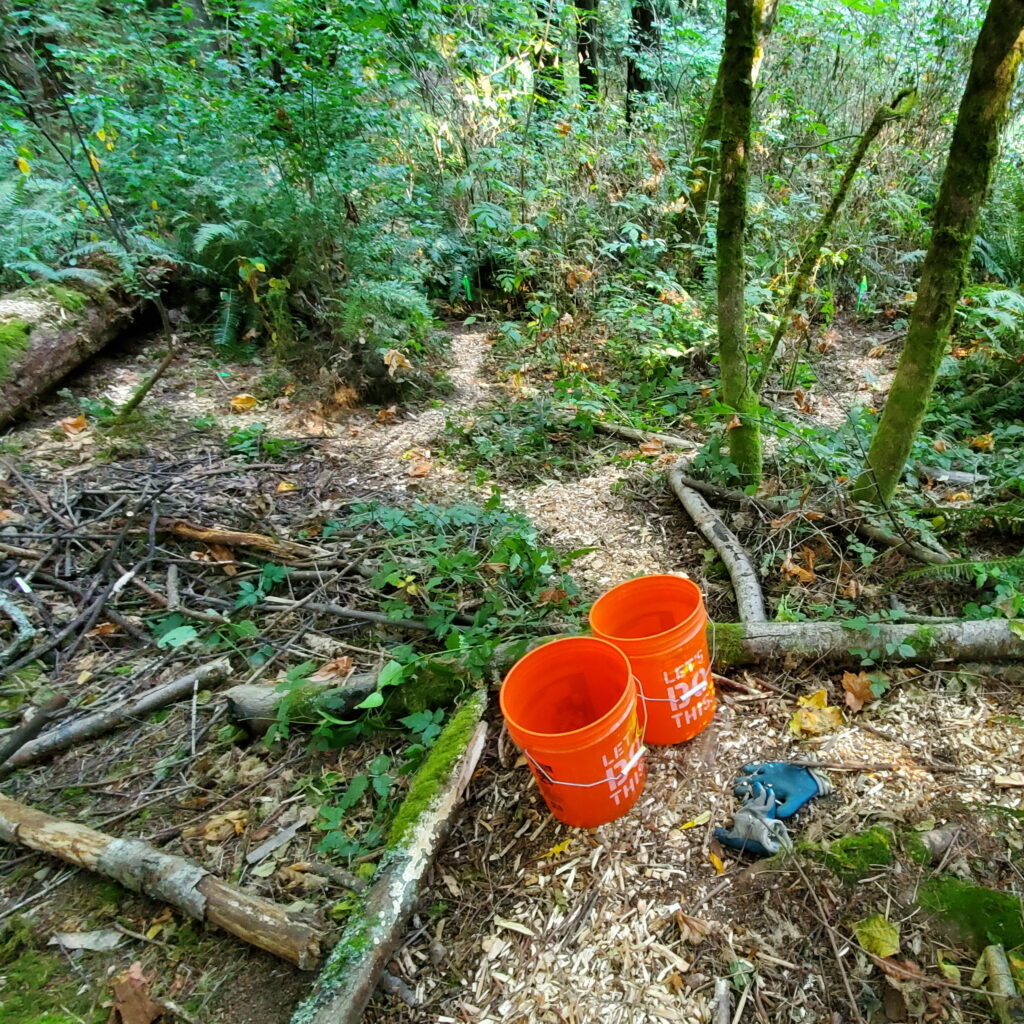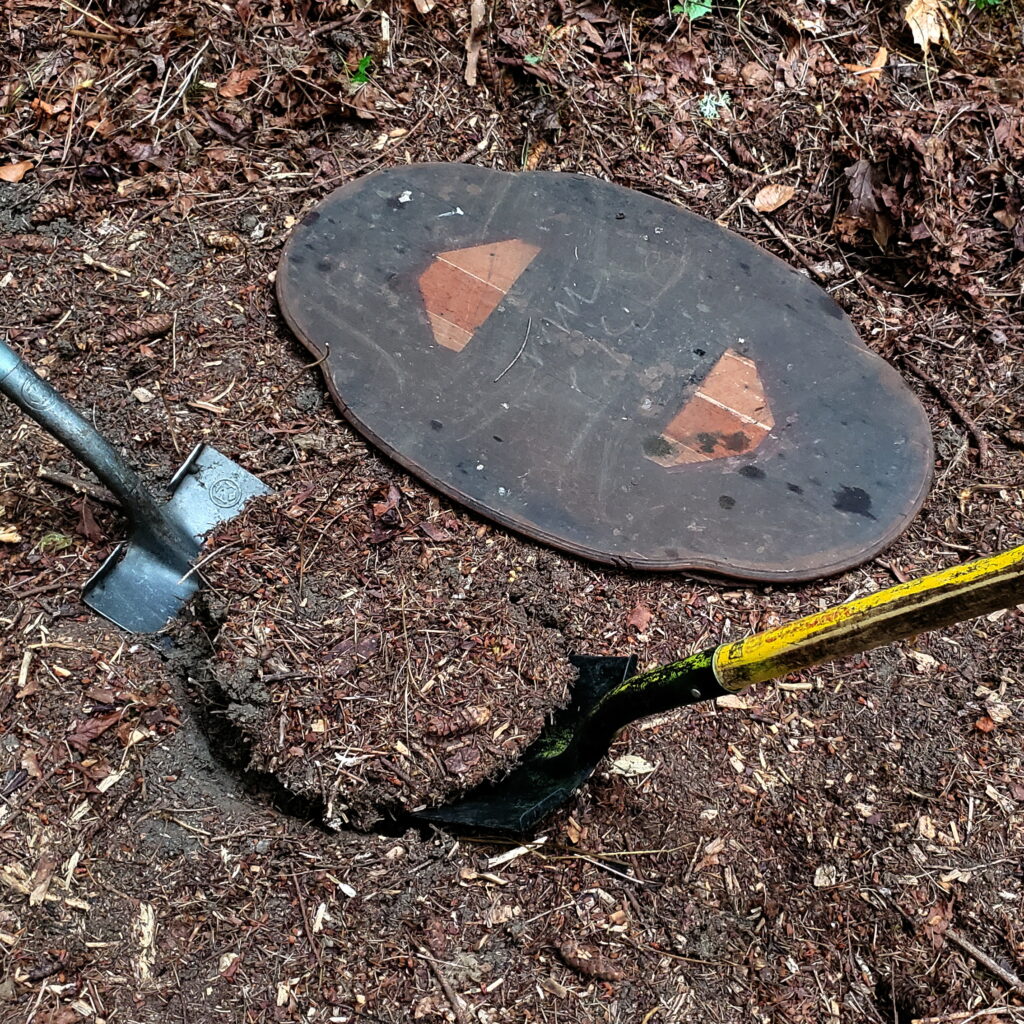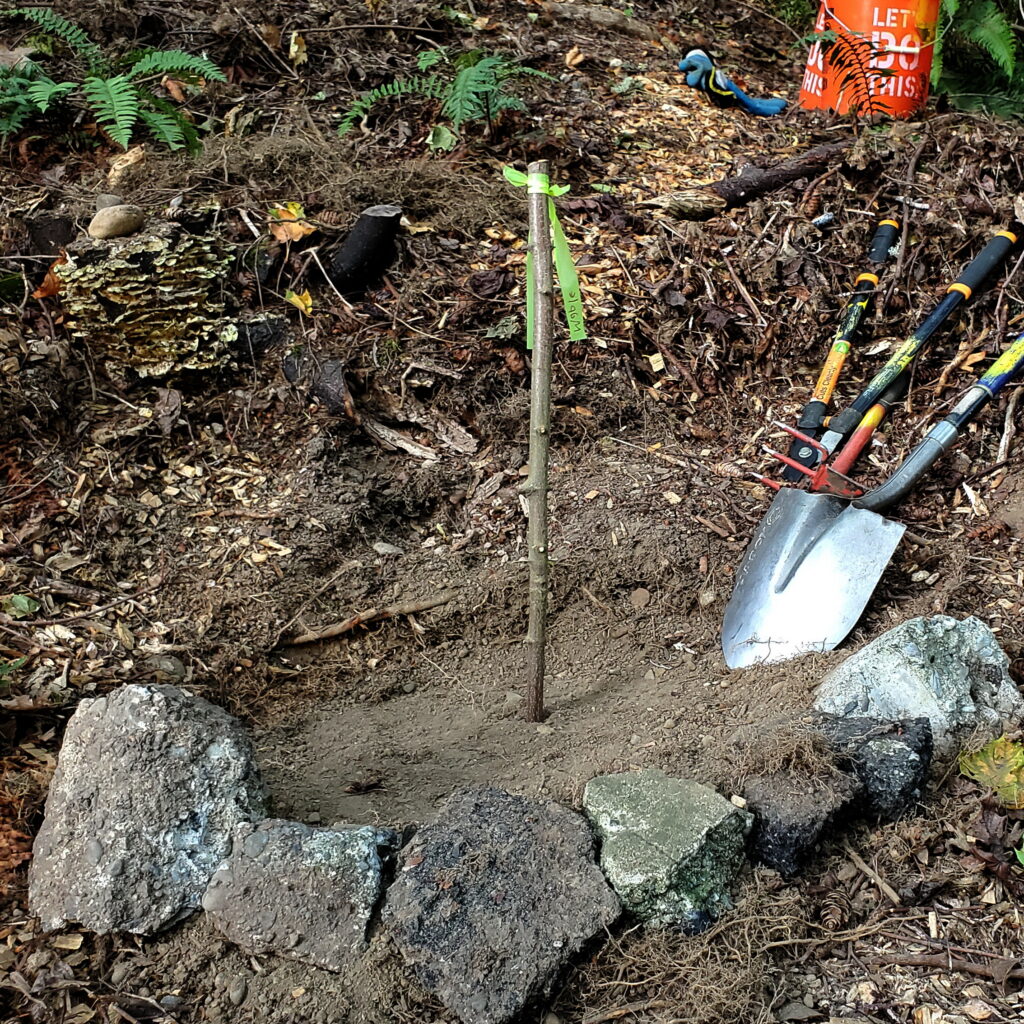On October 22, for the annual Green Everett Day, up to 100 community volunteers will plant up to 100 native trees in Forest Park. This year’s event promises to be the most successful yet, due to all of the advance work being done by the staff of Forterra’s Green Cities Partnerships. I am one of a group of volunteer forest stewards doing the on-site preparations for that event as described below.
Selecting Planting Areas
Since it does not make sense to plant trees beneath mature conifers, the planting areas we have selected are in aging deciduous forests that lack naturally regenerating native trees (see here, page 6). We will be planting a mix of Western Redcedar, Grand Fir, Vine Maple, and Cascara. The prime growing season for the conifers will be during the wet season after the deciduous trees have shed their leaves. Though some Western Redcedars in the region are struggling, the hope is that in the lower and flatter areas the soil will hold enough moisture to support them through long dry seasons. The Grand Fir, being more drought tolerant, will be planted on the drier and more sloping sites.
Making Temporary Access Trails
It was important to make temporary access trails through each planting area to minimize the trampling of existing ground cover. Winding through the sites around existing shrubs and plants, these trails were cleared of any fallen branches that didn’t lie flat on the ground and delineated with a thin sprinkling of wood chips (see photo below).

Siting Planting Spots for Each New Tree
To site the exact planting spots for each new tree, we looked for obvious gaps in the shrub and ground cover, spacing them at least a dozen feet apart. Each planting spot was checked for soil depth with a garden fork or other tool to locate any major obstacles like large roots that required finding different spots. Basic information about the soil also helped to inform the tree choice for each spot. We marked the spots with improvised flags and wrote the desired species name on the flags. We marked with wood chips the best paths to each individual planting spot with narrow side trails to help volunteers find the planting spots and access them without trampling existing ground cover.

To help keep organic plant debris out of the future planting holes, the existing duff was raked back a couple of feet from the centers. Existing native forbs were transplanted out of these spots into nearby empty spaces.

On steeper slopes, preparations also included making water basins that will make it much easier to water the new trees over the next two dry season.

With these extensive preparations completed, we look forward to a Green Everett Day event in which 100 volunteers will have a good experience, and 100 trees will be well-planted in appropriate spots.